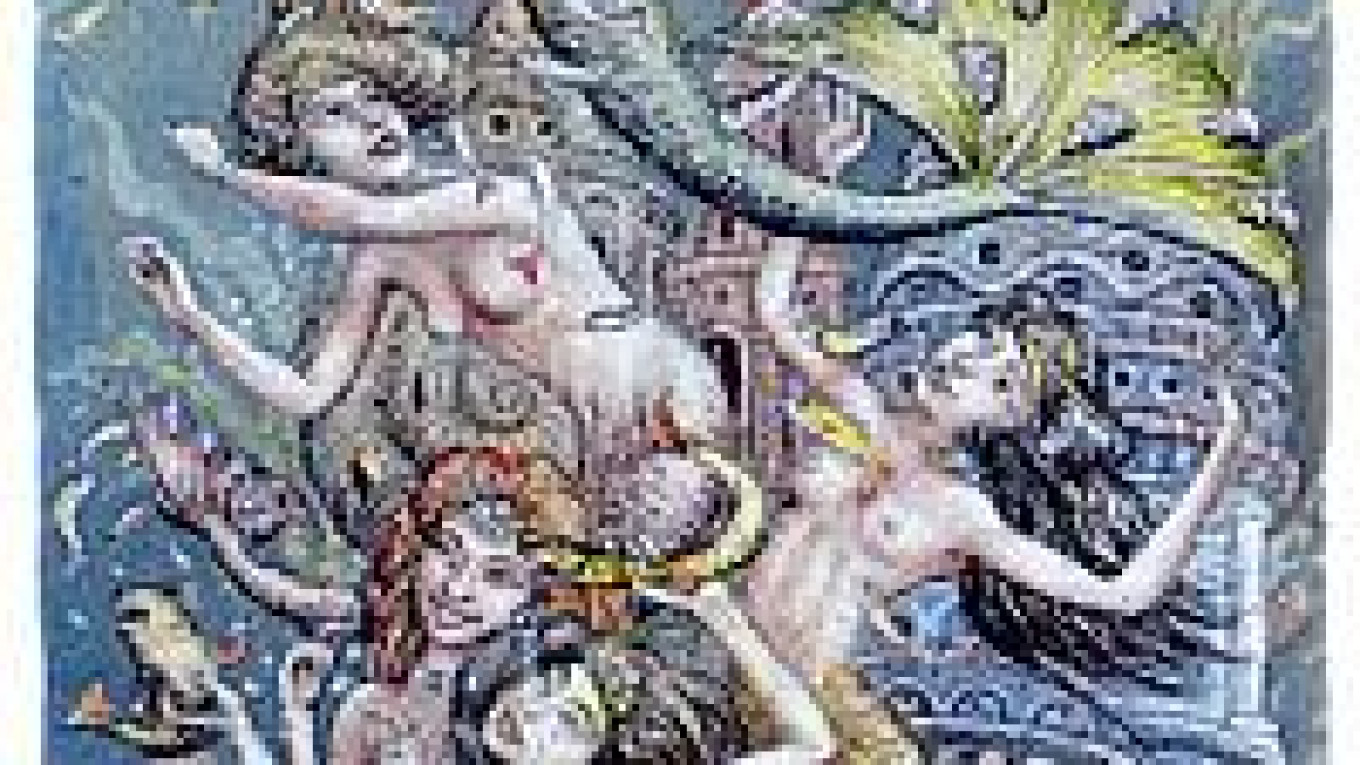"I don't go into bookstores because it upsets me," Diodorov, a People's Artist of Russia, said Thursday. Recently, he finished compiling a book about the history of Russian illustrations to Andersen, beginning with the 1860s and leading up to the present day. Many of the illustrations in his book are included in a retrospective exhibition now on display at the Alexander Pushkin Museum.
"We tried to gather all the good illustrations, but what you see on the book market today is sometimes hard to connect with the concept of art," he said. "The new type of publisher, who usually isn't cultured, chooses whatever is quick and cheap."
The earliest works on display in the exhibition, which is partly sponsored by the Danish Embassy, date back to the 19th century.
The first Russian artist to tackle Andersen, in 1867, was an aristocrat and scholar of Swedish origin, Mikhail Clodt von Jurgensburg. His illustrations rivaled Danish ones of the time, Diodorov said. "In some places there are unexpected discoveries, and it's genuine art."
Later, artists from the Mir Iskusstva, or World of Art, group, drew illustrations for Andersen that reflected their admiration for romantic, stylized aesthetics. The exhibition at the Alexander Pushkin Museum includes Mstislav Dobuzhinsky's title page for "The Swineherd."
"I think they are the most beautiful illustrations of Andersen ever created worldwide," Diodorov said.
Attitudes toward Andersen changed after the Revolution, due to the author's clearly stated Christian beliefs. Vladimir Lenin's wife, Nadezhda Krupskaya, excluded his fairy tales from educational programs in early Soviet Russia, and the religious content of the stories faced the chop.
"Andersen included many quotes from the Gospels, and his lines of poetry are purely religious," Diodorov said. "That was all cut out, and the editing was often done in such a way that the content and the moral of the story changed. Naturally, the artist illustrating the text followed this ideology."
In the 1940s and 1950s, professional illustrators found themselves squeezed out by Socialist Realist painters, such as Anatoly Kokorin and Valery Alfeyevsky, Diodorov explained. The exhibition documents this change, with large spreads of black-and-white book illustrations by Alfeyevsky and colorful ink drawings by Kokorin for the Malysh publishing house.
Now, in order to protect the bottom line, many fairy-tale books are illustrated by "tasteless and unprofessional hacks," Diodorov said. The cost of publishing without state support makes hiring a talented illustrator prohibitively expensive, he complained.
The artist started illustrating Andersen in 1980, when an Austrian publisher held a competition to illustrate "The Snow Queen." Although the rules stipulated one picture, Diodorov drew a triptych. "I suddenly read my favorite story from childhood in a completely different way," he recalled. "I saw its monumental quality, the absolutely bottomless philosophy in a children's book."
Nine years later, Diodorov took part in a Paris exhibition, where a French publisher commissioned him to continue working on the "Snow Queen" illustrations. "From that time on, very slowly, without any hurry, I have been working on fairy tale after fairy tale," he said. So far the total is three. The artist's work is in the collection of the Hans Christian Andersen Museum in Odense, Denmark.
While Andersen never visited Russia, he was interested in the country's literature and owned a manuscript of a poem by Pushkin. Hence the Alexander Pushkin Museum is an appropriate place to hold the exhibition, Galina Simonova, a cultural adviser at the Danish Embassy, said Wednesday. "It's a kind of home for Hans Christian Andersen here in Moscow."
April marked the 200th anniversary of Andersen's birth, and celebrations are due to continue until December, Simonova said. Events include the publications next month of Diodorov's coffee-table book, which includes illustrations by more than 200 Russian artists, and a new, unbowdlerized Russian translation of Andersen's fairy tales, to be released by Vagrius.
Last summer, a competition was held in Moscow to design a monument to Andersen. The winning group of four artists included Alexander Rukavishnikov, known for his statue on singer Vladimir Vysotsky's grave. Their 4-meter-high sculpture of the seated author remains unfinished, Diodorov said. Now the plan is for the work to be unveiled on Andersen's 201st birthday next year, in the outlying Marino district.
"Hans Christian Andersen and Russian Illustrators" runs to Dec. 6 at the Alexander Pushkin Museum, located at 12/2 Ulitsa Prechistenka. Metro Kropotkinskaya. Tel. 201-5674/3256.
A Message from The Moscow Times:
Dear readers,
We are facing unprecedented challenges. Russia's Prosecutor General's Office has designated The Moscow Times as an "undesirable" organization, criminalizing our work and putting our staff at risk of prosecution. This follows our earlier unjust labeling as a "foreign agent."
These actions are direct attempts to silence independent journalism in Russia. The authorities claim our work "discredits the decisions of the Russian leadership." We see things differently: we strive to provide accurate, unbiased reporting on Russia.
We, the journalists of The Moscow Times, refuse to be silenced. But to continue our work, we need your help.
Your support, no matter how small, makes a world of difference. If you can, please support us monthly starting from just $2. It's quick to set up, and every contribution makes a significant impact.
By supporting The Moscow Times, you're defending open, independent journalism in the face of repression. Thank you for standing with us.
Remind me later.


